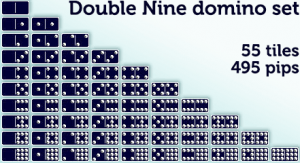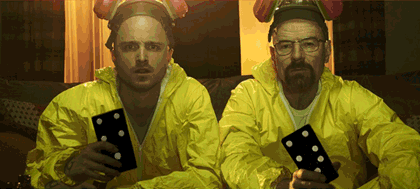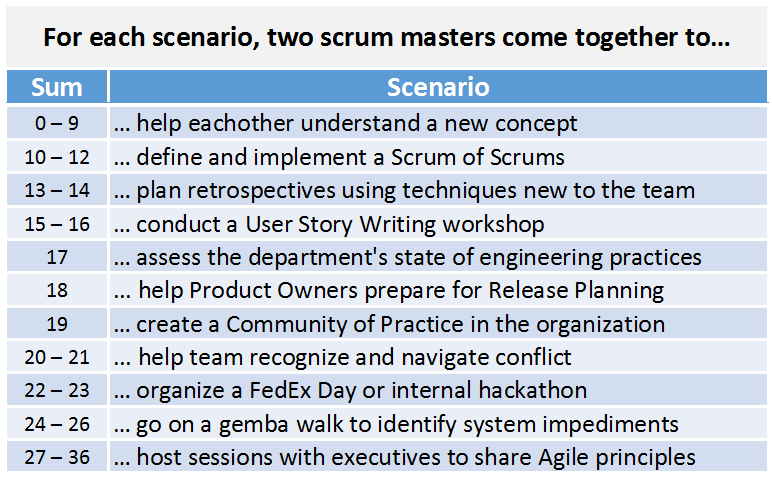If you’re looking for a way to randomize a group and match them with scenarios for role play, I suggest trying dominoes.
I’ve recently been speaking on the topic of pair-coaching, and in developing my workshop, I’ve been tinkering with using double-nine wooden dominoes. The face of a domino tile is divided into two ends, each with a number of pips (dots)… or no pips at all. In the case of double-nines, the values range from 0-0 to 9-9.


Game Play
As you can imagine, there are quite a few ways to configure your domino use. You can sum up all the pips (dots) on one tile (domino), or you can isolate the value of one end or the other. Due to the even distributions and large ranges, pairing up people by value on their tile offers a deep variety of encounters. Depending on the size of your group, you can remove dominoes (or add another set) to increase/decrease odds of matching people together.
Here’s a sequence I employ. You’ll notice that any of steps #2-#4 could be optional, but for this variation, I use both.
- Give each participant a domino. When I prep a room, I’ll have one tile face-down at each person’s table setting.
- Have participants choose one end of their domino and use its value to find another participant with the same value. In the demo below, Walter and Jesse can match up because they both have a four (4).
- (optional) Each participant’s second number can determine their role, level or other factor. For example, Jesse is a one (1) and Walter is a three (3).
- (optional) The total sum of dots on both participants is used to assign a scenario. Walter and Jesse will use scenario #12 for their role play.
- After some interval of role playing a scenario (eg. 5 minutes), I have the participants exchange dominoes with their partner and repeat the process. This means Jesse would take Walter’s 4-3 domino and look for someone with a three (3), while Walter seeks a one (1).

How to Match the Domino Game to a Scenario Menu
Let’s suppose that you have a roomful of participants that you’d like to pair up for simulations. You’ve got the dominoes and understand the mechanics above, but how many scenarios do you have? And how do we get two people to match AND identify which scenario to play out?
We might have players form pairs by matching the number on one half (end) of their tile, like Jesse and Walter both had a tile with four pips on one end. Next, we could ask them to add the sum of all pips across both their tiles. Jesse’s 5 plus Walter’s 7 yields 12 total pips. (For simplicity, we’ve skipped step #3 from the Jesse and Walter example.)
Below is a list of 11 scenarios that two Scrum Masters can act out. In our example, Jesse and Walter would role play the act of “two scrum masters coming together to define and implement a Scrum of Scrums.”

To add another dimension, you could use the values of their other ends (step #3 that we’d skipped) to indicate their experience levels or some other factor (different roles, skills, intentions, moods, etc.). My advice is to start simple.
Geeking out on Distributions
You may not be interested in this next bit, but I wanted to examine the distributions of the scenarios given the probabilities of sums. So I wrote some javascript.
… and…
What I took away from this narcissistic exercise is that, for a set of 55 double-nines, the odds of getting any of the eleven scenarios (in Figure 1 above) range from roughly 1-in-8 to 1-in-16 as demonstrated in the graph (Figure 2) below.

Of course, adding/removing dominoes or changing the number of scenarios will impact the numbers above.
The Bottom Line
So you see that with a little tweaking (and perhaps some math) you can generate a sophisticated space in which to simulate some variety of scenarios. The players, shielded from the complexities of the math (distributions, probabilities), can receive little more than the stripped down “Jesse and Walter” instructions and a menu of scenarios and have an wide world of play right at hand.

